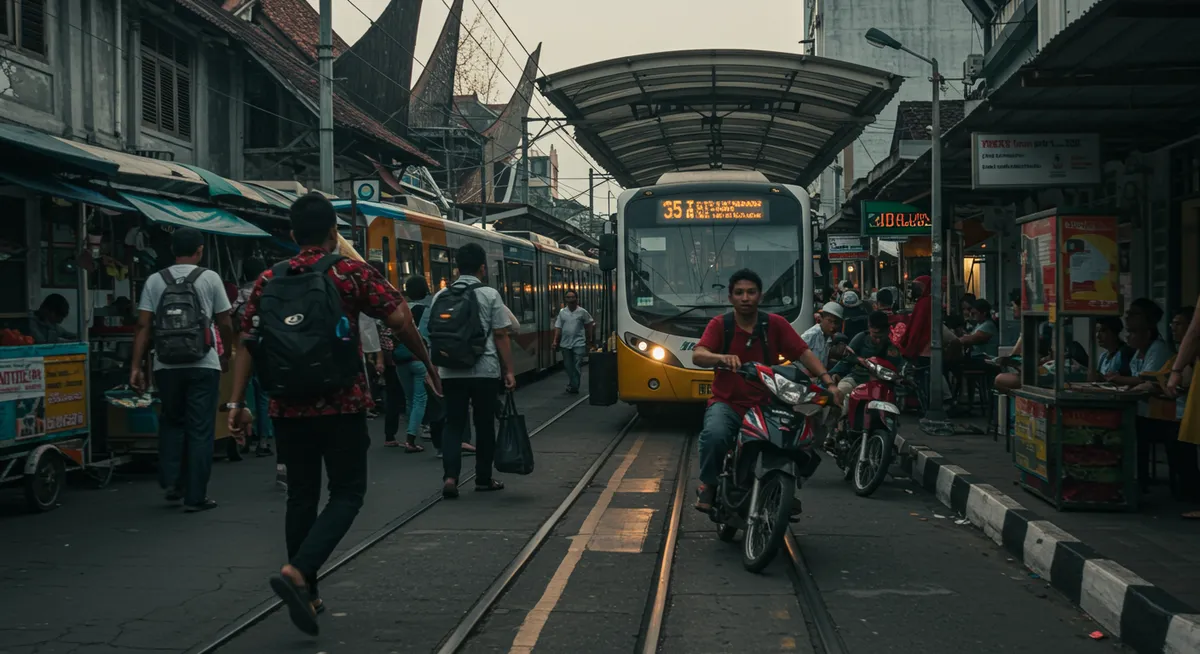
Getting Around Jakarta: Public Transport Guide
Table of Contents
Want to find the best travel deals for this destination? Chat with our travel hacking specialist!
Get Travel HacksCategory: getting-around-jakarta-public-transport
Mastering Jakarta's Public Transport System
As a seasoned travel writer who has personally navigated Southeast Asia's complex urban landscapes, I understand the initial apprehension. When it comes to getting around Jakarta public transport, it might seem daunting due to the city's sheer scale. However, Jakarta has made significant strides, developing an integrated and surprisingly efficient network that makes it entirely feasible for visitors to explore its vibrant energy without solely relying on private transport. This guide simplifies your journey.
Navigating Jakarta with TransJakarta Busway
The TransJakarta Busway stands as Jakarta's extensive and affordable bus rapid transit system. It leverages dedicated lanes, crucially helping you bypass the city's notorious traffic. This makes it an excellent choice for getting around Jakarta public transport, particularly for covering long distances efficiently. Each bus is air-conditioned and comfortable, and payment is conveniently made using an electronic card, known as an e-money card. Indeed, from my own travels, I've found the busway incredibly efficient for reaching popular cultural sites like Kota Tua. Therefore, always ensure your e-money card is topped up, as cash payments are not accepted onboard. For more detailed insights into exploring the city, refer to our comprehensive Jakarta travel guide.
The Speed and Comfort of MRT Jakarta
Jakarta's Mass Rapid Transit (MRT) system presents a modern solution for swift and comfortable travel between South and Central Jakarta. This predominantly underground and elevated railway is a true game-changer for getting around Jakarta public transport, especially for tourists aiming to bypass surface-level congestion. It effectively connects key areas such as Bundaran HI, Dukuh Atas, and Lebak Bulus, proving invaluable for efficient urban exploration. When I first rode the MRT, I was genuinely impressed by its pristine cleanliness and punctuality. Like other systems, payment occurs via e-money cards or single-trip tickets available at stations. Importantly, consider traveling during off-peak hours to enjoy fewer crowds and more available seating; this often contributes to the best time to visit Jakarta for easier movement.
Commuterline (KRL): Connecting Greater Jakarta
For travelers exploring beyond the immediate city center or arriving from adjacent regions, the Commuterline (KRL) offers an impressively expansive network. This electric train system forms an integral part of getting around Jakarta public transport for daily commuters, also providing an effective way to reach destinations like Bogor or Tangerang. While trains can get crowded, particularly during peak hours, KRL remains extremely budget-friendly. My seasoned advice for newcomers is to download the "KRL Access" app; it provides essential real-time train schedules and platform information, proving to be a lifesaver for navigating extensive routes. Furthermore, be aware that security checks are common, so allow a little extra time before your journey. Preparing for your visit, including understanding Jakarta visa requirements for tourists, will ensure a smoother trip.
Go-Jek & Grab: Ride-Hailing for Convenience
While not strictly "public transport" in the traditional sense, ride-hailing applications like Go-Jek and Grab are indispensable for getting around Jakarta public transport by complementing the public network. They integrate seamlessly into the city's dynamic transportation ecosystem, offering both motorbike (ojek) and car services that are surprisingly affordable and readily available. For tourists, these apps provide a convenient and flexible alternative, especially during late hours or when public transport isn't directly accessible to your exact destination. As an experienced traveler, I've personally relied on Go-Jek's "GoRide" service countless times to efficiently weave through Jakarta's traffic for shorter distances. To ensure seamless booking and communication, always have a local SIM card. These services are excellent for bridging gaps between major transport hubs. For general travel tips and insights into Asia, visit Plan Vacation Asia.
Frequently Asked Questions
Do I need a special card for Jakarta public transport?
Is Jakarta public transport safe for tourists?
Can I use cash on Jakarta public transport?
Mastering getting around Jakarta public transport is key to a rewarding visit. From the efficient TransJakarta busway and modern MRT to the far-reaching KRL and convenient ride-hailing apps, the city offers diverse options to suit every traveler's needs. Embracing these systems allows you to experience Jakarta's vibrant pulse firsthand, navigating its complexities with ease. Don't let the city's size deter you; instead, utilize its evolving transport network to unlock all its hidden gems and fully immerse yourself in the local culture.